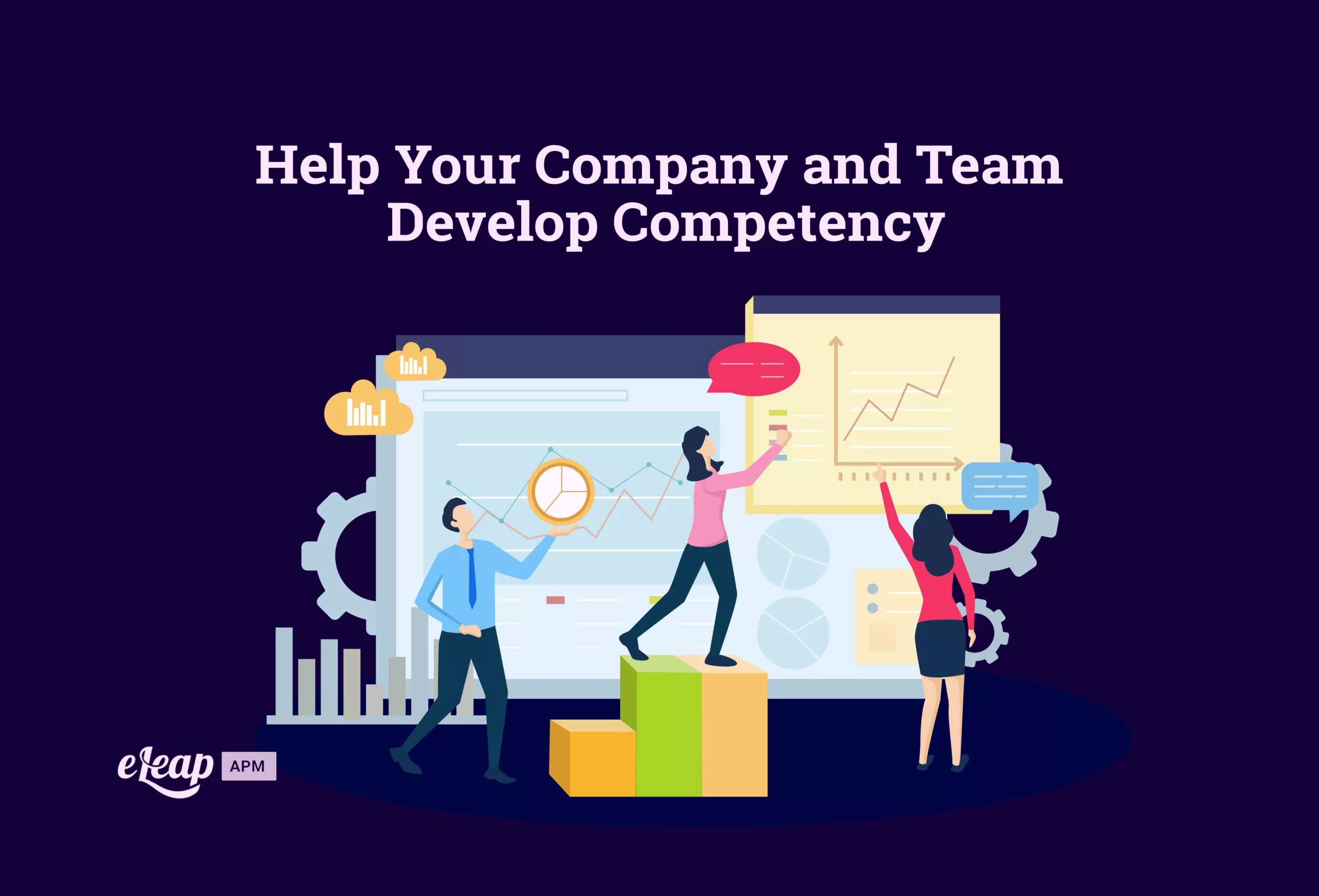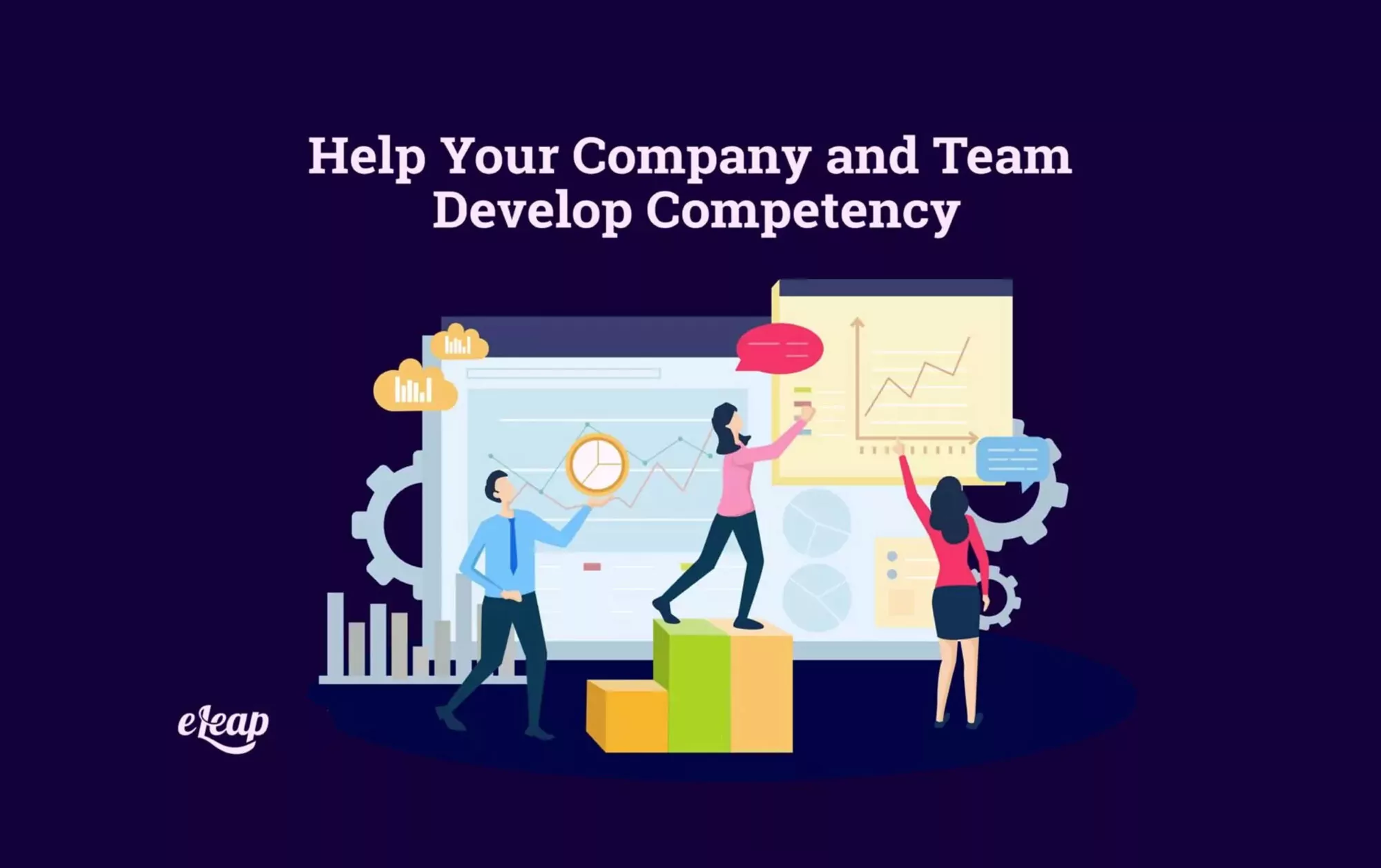Help Your Company and Team Develop Competency

Have you taken the time to properly develop competency areas in your organization and on all of your teams? One of the mistakes that some companies make is focusing either only on the organization as a whole or focusing only on individuals/teams. Instead, it is important to put effort into developing competency throughout the company, which is what we’ll be covering below. The eLeaP Skills & Competencies System is designed to streamline developing and managing organizational and personal competencies.
Here, you will find simple and effective tips and information to help you boost the competencies of your organization and its employees.
What Are Competencies?
When used in this context, the word competencies refers to various skills, knowledge, attributes, etc., that are measurable and that will help someone to perform their job properly. The competencies help to set the performance standards expected in your business and with your team members. Naturally, you want to make sure that everyone is up to par regarding their skills and knowledge, so you want to take time to develop competency amongst your team.
You need to have quality, well-designed competencies that will allow you to ensure you have the right employees working in the right roles in the company. A good set of core competencies can help to give individuals, teams, and the organization a set of guidelines to follow when it comes to improving their personal and professional development. Additionally, it could help to boost the quality of training and coaching that takes place with the employees and leaders in the company.

Many Companies Develop Competency in These Areas
Let’s consider some of the various types of competencies that are commonly used. We’ll briefly discuss these below.
Of course, you’ll want to remember that this is just a sampling of different competencies. Different types of businesses will want to develop competencies specific to their business requirements, but the ones below tend to apply across the board.
Business Acumen
This refers to seeing things through a business perspective when assessing various situations and making decisions in the company. Those with good business acumen will also have a deeper understanding of how their actions and decisions affect the company.
Problem-Solving Capabilities
Working through problems is an important skill for all team members. Having those who are good at understanding and breaking down various issues to find solutions is essential, no matter how large or small your company might be.
Decision-Making Skills
You should also consider the benefits of decisiveness and how this should be one of your core competencies. Being able to handle issues and make decisions quickly is important for all types of companies. Those capable of being decisive will help you and your business to make more progress. This is far better than being paralyzed by indecision. Ultimately, this has the potential to help you and your team to make more progress.
Maturity Level
Maturity refers to a person’s ability to handle themselves professionally in various situations, especially in the workplace. It also refers to a person’s honesty in taking responsibility for their actions, including the good and the bad.
These are, of course, just a few examples of the different types of competencies you may need for your organization, teams, or individuals.
Are Competencies the Same as Skills?
A lot of people might be wondering whether skills are the same as competencies. You should think about it like this. The competencies are the larger, overarching structures that are in place, and the skills are what make up those competencies. A single competency will likely have several skills attached to it. You need to have certain skills and knowledge to do well and to achieve what’s needed for the different types of competencies.
Organizational Competencies
When you develop competency in various areas at the organizational level, you will need to make sure you have a good and thorough understanding of the company and its core values. Naturally, different companies will have different values, which means the types of competencies created will vary quite a bit. Think about what it is that makes a high performer in your company. What is it they bring to the table, and what do you want to see out of others?
Organizational leaders must step back and consider the main types of competencies that would work best for this particular business. Developing competencies helps them see what will be needed from employees when building teams.
When companies create their list of core competencies, they have problems narrowing their selection. They start to “go wild” with the various competencies they could try to add, and they can go overboard without realizing it if they aren’t careful. Most of the time, it is a good idea to have 10 organization-level competencies at most. More than that, and you could start to dilute your capabilities.
When creating the core competencies, it is important to involve the company’s leaders, including the founders, not just managers. Working with the leaders, founders, and other team members helps provide a more well-rounded perspective.
Team and Individual Competencies
There will be certain competencies that individuals should possess for them to be successful in your organization. Often, there will be multiple people who have the same role in a company. For example, you might have several people assigned to marketing. They will typically need to have the same core competencies, but you will also want to see what each person brings to the table. Know as much about the team members and their roles and skills as possible to determine their ideal competencies best.
Once the company competencies have been developed, it will be easier for the team leaders in various departments to build team and role competencies. They can take the work done at a higher level and then use that as a guideline.
Leaders might want to create a guidebook or playbook that serves as a template. This will make it much easier for team leaders to input the different skills and characteristics they want to see when creating a competency.
You will also have to consider the overall number of team and individual competencies the company should have. Of course, this will vary from one company to another, but there are some guidelines you can use. Most experts will suggest that you have five individual or team competencies. More than that, the waters can get muddied.
Adding the Competencies
After you develop the competencies, you also have to consider how they will be implemented for individuals and the organization. You want them to become part of policy and company culture going forward, which means you will need buy-in from employees at all levels. How you handle the rollout will vary based on your business and team. You want to do what you feel will work best for everyone.
Often, having an all-hands meeting or team meeting to discuss and talk about implementing the competencies is a good start. This ensures the entire team gets to learn about the changes all at once, and they can ask questions if they have any.
Keep in mind that you should still be listening to your employees for feedback regarding competencies. You might feel that a certain competency is important, but the team that is in the trenches working on that team each day might have a different opinion. You will want to listen to what they say and see if it has any merit. Getting more people involved with the rollout helps to ensure they are invested and that they adopt the changes.
Bringing on New Hires
When you finally have the competencies developed, it is time to think about how this will alter your hiring process. Now that you know the competencies and skills that your employees need to have in different roles. It is time to make sure they are added to the criteria you are using for hiring.
Keep in mind that this is not the same as a job description. The description will list the tasks and duties a person will have once hired. The competencies will instead be a list of the abilities that are needed. You can use your insight into the competencies when hiring to find the ideal candidates for different roles.
It might take you some time to develop a good guide for your organization’s and teams’ competencies. However, it will be well worth the time, as it can make your business and your employees more efficient overall. The eLeaP Skills & Competencies System is designed to streamline developing and managing organizational and personal competencies.